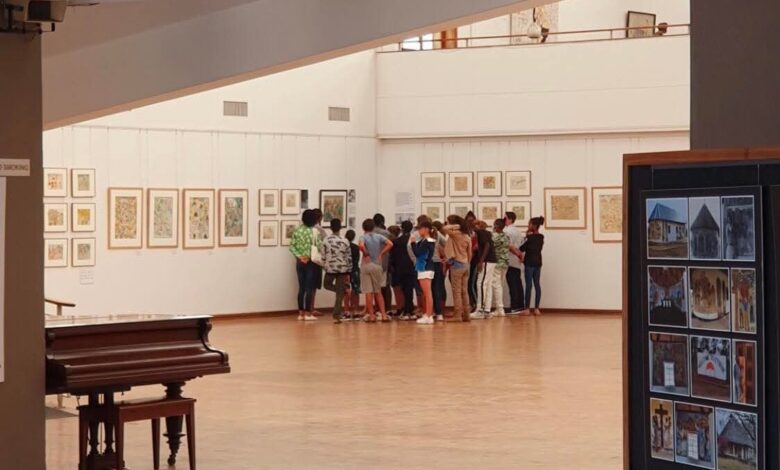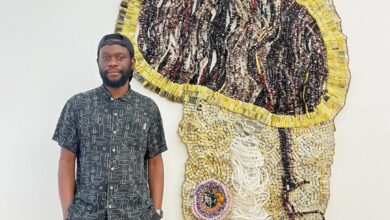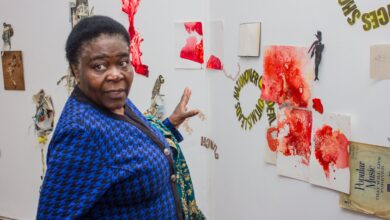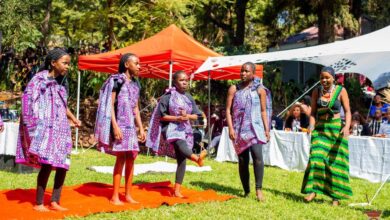Chitungwiza Artists End 2024 with Promising Exhibition

In a bold and groundbreaking move, a group of renowned visual artists from Chitungwiza, Zimbabwe, ended 2024 with an exhibition that showcased their collective talent and brought their celebrated works back to their hometown. While many of these artists have previously exhibited internationally, including at prestigious venues like the Venice Biennale, they chose to celebrate their success in Chitungwiza, breaking away from the trend of displaying their art in upscale, foreign galleries.
The exhibition, titled Nhimbe, was organized by the Chitungwiza Artists Collective and hosted at Chikwanha Hotel. It featured the works of Admire Kamudzengere, Batsirai Muskwe, Tawanda Reza, Victor Nyakauru, Clive Mukucha, Prudence Chimutuwah, Tinotenda Chivhinge, Evans Mutenga, Sky Salanje, Crispen Matekenya, Sharon Sanzira, Ngaatendwe Mapako, Terrence Musekiwa, and Pardon Mapondera. The title Nhimbe, meaning “community engagement capital,” reflects the ethos of collaboration and communal connection central to the exhibition.
Nyakauru, who recently represented Zimbabwe at the 2024 Venice Biennale, and Kamudzengere, who showcased at the Venice Biennale in 2017, are just two of the notable names who participated in Nhimbe. Despite their success on the international stage, they emphasized the importance of returning to Chitungwiza to engage directly with the community that has always supported their art. Kamudzengere explained, “Chitungwiza has always been very supportive towards the arts in Harare. If so many artists from this area are contributing to the cultural sector, it only makes sense to bring the art back home.”
The exhibition also had an important diplomatic touch, as it was officially opened by Stéphane Rey, Switzerland’s ambassador to Zimbabwe, Zambia, and Malawi. Rey encouraged artists to apply for the Swiss Support to Arts Development in Zimbabwe grant, further supporting the integration of local artists into the global cultural dialogue.
Nhimbe presented a diverse range of works, including paintings, sculptures, mixed media, and collages, each exploring themes of identity, culture, and social justice. The exhibit was located at Chikwanha Hotel, strategically chosen for its proximity to both Harare and rural areas, making it easily accessible to a wide audience. The site itself is steeped in historical and cultural significance, often referred to as musha mukuru, a place of great importance and mystical value in Chitungwiza.
The exhibition was not just a showcase of art but also a commentary on the growing inclusivity of the visual arts in Zimbabwe. The collective, which was formed during the COVID-19 era when many artists were restricted in their movements, continues to thrive and push boundaries. In its ongoing mission to engage the community, the collective invited the public to view the artworks as a shared experience, with the aim of broadening the audience and making art more accessible.
The response from the public was overwhelmingly positive, with many visitors, including locals and young people from the nearby mall, engaging with the artworks in an organic, unpretentious manner. One memorable moment involved an elderly visitor, who, while casually inspecting the pieces, seemed to represent the connection between the past and future generations, a fitting symbol of the exhibition’s community-centered theme. His visit was seen by many as a form of blessing for the project, further validating the exhibition’s relevance to Chitungwiza’s cultural landscape.
The artists involved in Nhimbe also showcased their innovative use of materials, such as Mukucha and Chivhinge’s thought-provoking sculptures made from found objects. These pieces raised questions about the value of discarded items and their place in the art world, echoing the philosophies of iconic artists like Marcel Duchamp.
Kamudzengere highlighted that the aim of the exhibition was not only to display works but to connect with the community and expand the appreciation of mixed media, painting, and sculpture, which are not always as popular as traditional stone sculpture in Zimbabwe. The collective’s commitment to engaging and educating their local audience marks a new chapter for Chitungwiza’s vibrant art scene.
As 2024 comes to a close, the success of Nhimbe represents a significant milestone for Chitungwiza’s artistic community. It not only underscores the talent that exists within this region but also signals the beginning of a new era where local artists are celebrated at home, and their works are integrated into the global art conversation. With plans for more exhibitions and engagements in 2025, Chitungwiza artists are poised to continue making waves, both locally and internationally.




